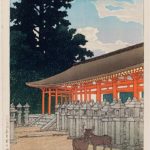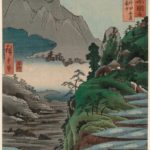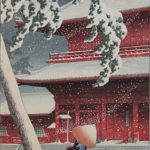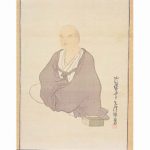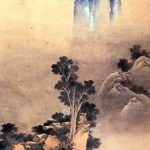Table of Contents
Format, rule, seasonal words, and famous poets of haiku poetry
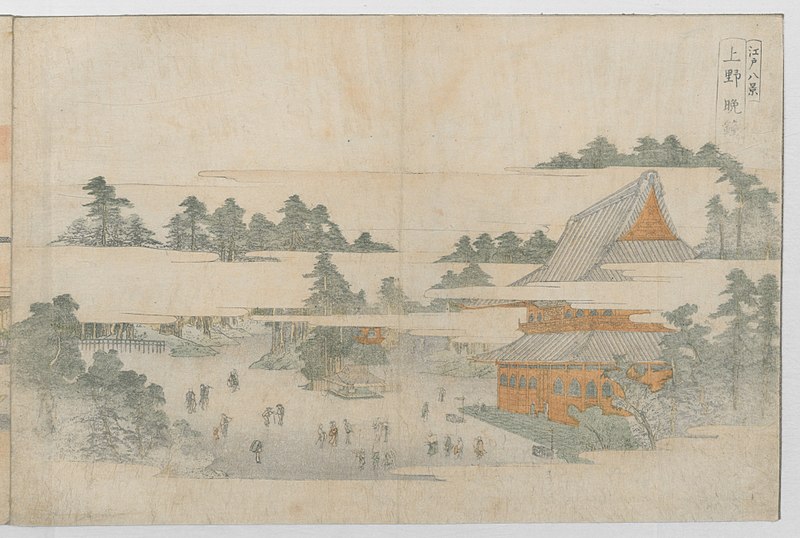
The rules of haiku is so simple. But do you know how to write haiku poems is different between Japanese and English?
What is a “haiku”? The structure in Japanese and in English.
The format of Japanese
- 5-7-5 syllables (17 syllables in all)
- Must use a seasonally word(phrase), “kigo“(read below)
The strucure of haiku is basically 5-7-5, 15 syllables. It is a poem that place value on the rhythm of sound, so it is better to keep 5-7-5 as possible. It is like a samba rhythm for Brazilians. The Japanese settle down somehow by listening to this syllable.
However, as an exception, there are also haiku such as an extra syllable “ziamari” or conversely less “zitarazu”.
In addition, Taneda Santoka(1882-1940) is a poet who dared to begin haiku poems free from 5-7-5 structure.
Related Post
The format of English
- Three lines and a preferably 5-7-5 syllables
- Kigo is unnecessary. It’s okay to have just sense of season
- Using a mark of dash(-) or colon(,) as “kireji”(read below)
- A theme is not a thought or concept but a matter
- Avoiding a description and prose
What does haiku mean?
The haiku’s history started from “haikai”(俳諧) which focused on funny themes. Haikai and “renga”(連歌, more elegan than haikai) started with “hokku”(発句), 5,7,5 syllables and next person consider another 7,7 syllables like fit to hokku, then the third person thinks 5,7,5 syllables for following.
So haiku originally meant a hokku(start) of haikai and the words joined.
Renga
First person(hokku): 5,7,5
Second person:7,7
Third person:5,7,5
Forth person:7,7
……
Comparing to haikai, people enjoyed sensibility and feelings in renga. Renga and haiku were played by two or more performers unlike tanka, 5-7-5-7-7 or 7-7-5-7-5 syllables by a single person. Hokku literally means starting phrase and is a part of kaminoku(the first part of a poem) in tanka.
Then, people in Edo Period made hokku independent and that is the style of haiku, 5-7-5 syllables.
Related Post
t is said that 5-7-5 or 5-7-5-7-7 syllables are the most suitable rhythms for Japanese. And the other reason that English haiku doesn’t have 5-7-5 syllables, is the issue of languages. English syllable may have one vowel with some consonants. But Japanese syllable doesn’t have plural consonant. So it’s difficult to apply Japanese to English.
Seasonally word:kigo
Types of kigo widely cover the range of plants and animals, time of year, events, astronomy, life.
Also about kigo, the weather of Japan has clear four seasons and each kigo stir imagination of Japanese who live there. The countries have their own condition of the climate and the culture. It is impossible to compel kigo to others.
Spring
spring moon, spring dark, spring rain, spring river, spring sky, warm, tranquil, be perfectly clear, thin ice, laughing mountain, soap bubble, turban shell, the first day of spring, the vernal equinox, cherry-blossom viewing, the Dall’s Festival, swallow, silkworm, kitten, ume (plum blossoms), cherry blossoms, Japanese butterbur scape…
Summer
hot, cool, summer rain, summer sky, summer mountain, summer Fuji, ice cream, iced coffee, iced tea, rice‐planting, early summer rain, rainy season, early summer, morning cloud, firefly, cicada, cicada born, catfish, Mother’s Day, Father’s Day, the summer solstice, carnation, young leaves, crape myrtlean, green chili…
Autumn
fresh, chilly, autumn pond, autumn river, autumn rain, autumn day, autumn mountain, dewdrop, moon, the Milky Way, crescent, midnight moon, fireflower, the lingering summer heat, locust, bell cricket, good harvest, bad harvest, rice harvesting, autumn leaves, the autumnal equinox, autumn eggplant, gentian, orchid…
Winter
winter water, winter sea, winter field, oden, yakitori, fire, stove, catch a cold, north wind, sleeping mountain, snow, Orionthe Hunter, jacket, coat, globefish, yellowtail, rabitt, fox, mandarin orange, carrot, daikon(Japanese white radish)…
Pause:kire(切れ), kugire(区切れ)
Japanese haiku has two types of the pause in its short 17 syllables. When you want to emphasize the touched feeling and use a technique of “kire”. Using “kireji”(切れ字) including, ya, kana, and keri, you can express your delight or sadness strongly in same way of exclamation mark. It also has an effect of omitting the words and leaving the readers with an allusive feeling.
On the other side, “kugire” is a break of meaning in a haiku poem. There are four kinds of the pause, first line break(shoku-gire 初句切れ), second line break(niku-gire 二句切れ), no break(kugire-nashi 句切れなし), and mid-flow break(chukan-gire 中間切れ).
Examples of haiku poems
Matsuo Basho
Four seasons haiku
- Haiku poems of spring. The examples by Matsuo Basho
- Haiku poems of summer. The examples by Matsuo Basho
- Haiku poems of autumn. The examples by Matsuo Basho
- Haiku poems of winter. The examples by Matsuo Basho
Famous Poets
Themes
- Japanese traditional haiku poems about nature
- 10 Haiku love poems
- Haiku poems about death and rip
- Haiku poems about Christmas
- The examples of haiku poems about flowers
Four seasons haiku
- The spring haiku poem examples by Japanese famous poets
- The summer haiku poem examples by Japanese famous poets
- The autumn haiku poem examples by Japanese famous poets
- The winter haiku poem examples by Japanese famous poets
There were three famous poet of haiku in Edo Period, Matsuo Basho(松尾芭蕉), Yosa Buson(与謝蕪村), and Kobayashi Issa(小林一茶)
Such as…
<English>
Even in profusion
I prefer the first cherry blossoms
Rather than peach
<Japanese>
咲き乱す 桃の花より 初桜
Sakimidasu/ Momo no hanayori/Hatsuzakura
<English>
The mayfly land
On the paper jacket
Of my shoulder
<Japanese>
かげろうの わが肩に立つ 紙子かな
Kagerou no/ Waga kata ni tatsu/ Kamiko kana
Yosa Buson
<English>
Spring ocean
Swaying gently
All day long.
Translated by Miura Diane and Miura Seiichiro
<Japanese>
春の海 ひねもすのたり のたりかな
Haruno-umi Hinemosu-Notari Notarikana
Kobayashi Issa
<English>
“Gimme that harvest moon!”
Cries the crying
Child.
Translated by David G. Lanoue
<Japanese>
名月を 取ってくれろと 泣く子哉
Meigetsu-wo Tottekurero-to Nakuko-kana

